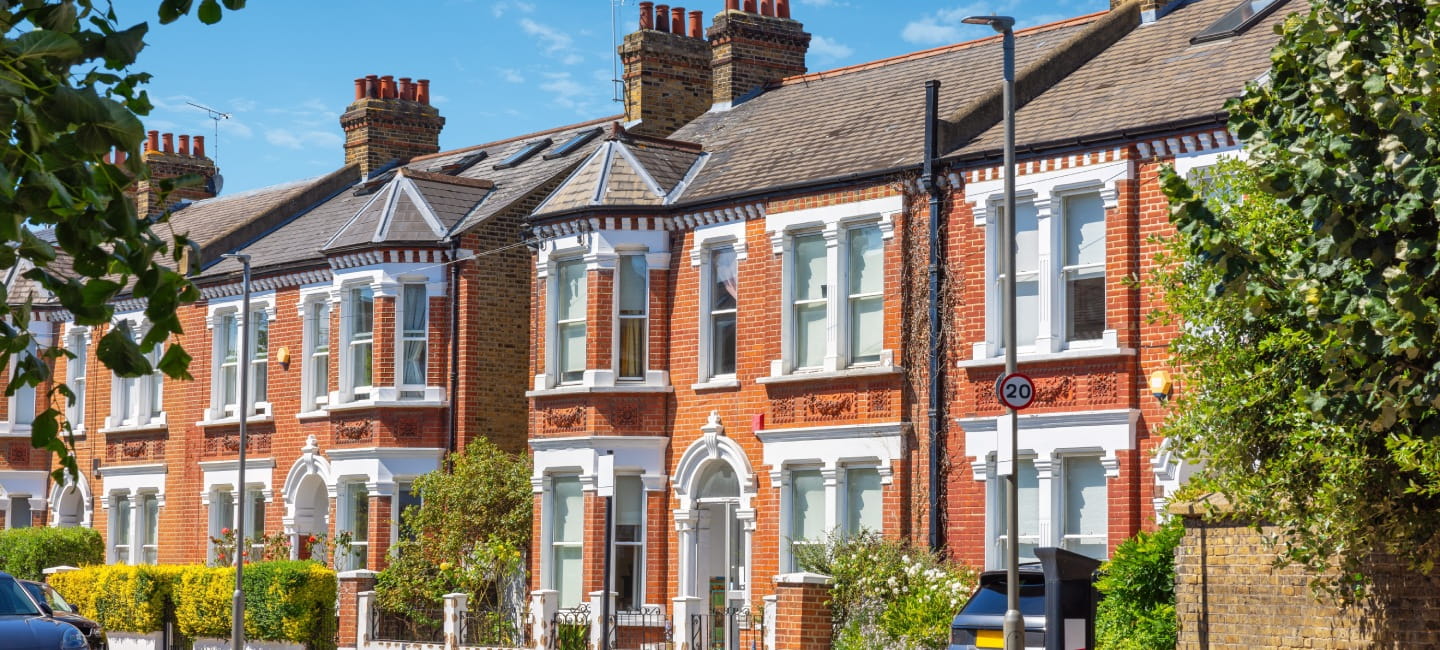
This article is for general guidance only and is not financial or professional advice. Any links are for your own information, and do not constitute any form of recommendation by Saga. You should not solely rely on this information to make any decisions, and consider seeking independent professional advice. All figures and information in this article are correct at the time of publishing, but laws, entitlements, tax treatments and allowances may change in the future.
If you’ve got a tax-free lump sum from your pension, a cash windfall or other long-term savings, you might be thinking about using them to buy property to help boost your income.
Historically, using the money either as a deposit or to buy a rental property outright has been popular among older investors, but you might have read about many landlords leaving the market in recent years as mortgage rates soar and changes to legislation attack profits.
That’s left some deciding it’s safer to just leave their money in a cash account, which are now paying a decent amount of interest at the time of writing.
However, average rents across the UK reached a record high earlier this year (rising at an annual rate of 9.2% in March) and house prices showed signs of a recovery – so, does that mean now is the time to reconsider rental property as a useful part of retirement income?
While some might have enough money to buy a property outright, many only have part of the amount – and therefore need to take out a buy-to-let mortgage to make up the difference between their deposit and the property purchase price.
Often, rental income can be used to cover loan repayments, leaving the landlord to benefit from any increase in the home’s value.
However, as inflation skyrocketed in recent years and interest rates were raised to combat it, this had a big effect on the cost and availability of buy-to-let mortgages.
“As inflation took hold and interest rates increased during 2022 and 2023, this type of mortgage became difficult to obtain and many buy-to-let mortgage products were pulled from the market, creating more difficult barriers to entry for many investors,” says Adam Powell, Associate at WS Residential, part of property consultancy Walker Singleton.
“However, as inflation has slowed in the last six months, lenders have released more products back to the marketplace.”
Buy-to-let mortgage rates have also started to come down in recent months, according to Which?, making running a rented property a little less expensive.
The costs are still a lot higher than in recent years though and will need to be factored into any calculations – and the property can be repossessed if you aren’t able to keep up with mortgage payments too.
Making money by selling a house at a profit is a large part of the attraction of buy-to-let, and average house prices in the UK have risen considerably in recent decades.
Between February 2009 and September 2022, the most recent market peak, the cost of the typical home in Britain climbed from just over £155,000 to £292,000 – a jump of more than 88%, and an increase of £74,000 when adjusted for inflation.
Although recent rises in living costs and interest rate hikes have stopped prices soaring upwards, there are encouraging signs for the months ahead, says Wendy Docherty, Director and Buy-To-Let Specialist at mortgage broker SPF Private Clients.
“There are expectations that the housing market will continue to recover during 2024 as interest rates start to come down and mortgage affordability improves. We’re already seeing property price increases as the spring selling season boosts the market.
“The opportunity to capitalise on lower property prices, before they rise further, and strong rental demand could mean now is a great time to buy an investment property.”
Powell adds: “Ultimately there’s a shortage of housing stock in the buy-to-let marketplace, which is unlikely to change.
“Combined with the growing population and limited land on which to build new homes, along with consistently failed new home building targets, this suggests that over the longer-term bricks and mortar remains a strong investment with likely positive trends on capital value over a period of time.”
.jpg?sc=max&mw=800&h=450&la=en&h=731&w=1300&hash=80CA5A1435EC5C5B9A3E6B96789C4F51)
Unlike most other investments, there’s a hands-on, human element involved in buy-to-let. This can appeal more to some investors than others.
Many landlords relish the opportunity to manage a property, especially if they’re retired and have spare time.
Others won’t want to be heavily involved, which could be because they’re thinking of investing in property in a potentially more profitable part of the country, away from their home.
In these cases, they’ll enlist the help of a managing agent in the local area.
Docherty says: “A good agent will manage any problems as they arise, source tenants and complete all necessary checks and paperwork on your behalf. For an additional fee, they’ll take care of repairs and handle the rent payments for you as well, requiring minimal input from you as the landlord.”
The catch, of course, is the need to pay an agent, which could take a sizeable chunk (often up to 20%) out of rental income.
It depends on the investor’s appetite for involvement – they could, perhaps, instruct an agent to deal with finding tenants and handling the administration of getting them in, but do any repairs and maintenance themselves, which will increase overall rental profits.
But Powell doesn’t think that higher cost should put anyone off. “It’s safe to say that the market has changed beyond recognition from the early 2000s. There’s much more regulation, and the industry is operated on a much more professional basis than before.
“However, it’s important to note that this doesn’t mean it’s a ‘no-go’ for landlords, just that – as with any professional service – the experience and knowledge of a good managing agent is worth paying for.
“This is especially true when it comes to vetting and dealing with tenants. Getting things right at the outset is crucial and this is done with thorough referencing and correct tenant selection.”
By getting higher quality tenants in, it can reduce the risks to the property and drop the overall costs landlords might face from damages, or periods when the property is unoccupied (and thus making no money).
“[Finding the right tenant] can help minimise the chances of unwanted wear and tear, financial complications and difficulty enforcing legal proceedings in an event of breach of tenancy,” adds Powell.
“There are many factors that can influence your long-term property investment plans,” explains Powell.
“For example, whether your investment is subject to a mortgage, how much income or profit you wish to draw from it and your exit strategy for releasing the equity later in life – these can all affect your decision making.”
He says it’s particularly important to stay on top of changes in rules governing landlords, as these will have a direct effect on potential profits.
Powell points out things like Capital Gains Tax (CGT), Income Tax, Stamp Duty and Mortgage Interest Relief have changed in recent years, affecting the amount landlords will need to pay throughout the process of owning a buy-to-let property.
For instance, while CGT has slightly dropped for some landlords recently, they’ll still need to pay an additional 3% in Stamp Duty when buying the property, and can only get tax relief of 20% on their mortgage interest payments.
This isn’t set to change any time soon, despite calls for a reform, meaning potential profits from rental property will remain lower than before the legislation came in.
There’s also the possibility of changes to the way landlords are required to act – the Renters Reform Bill was set to make big changes to things like tenancy length and eviction powers, but now looks unlikely to become law, meaning a less stable outlook for future property investors.
The current higher interest rates set by the Bank of England will also present challenges for landlords, and not just in the shape of more costly mortgages.
Buy-to-let investments are typically judged based on their ‘yield’ – the amount of income they generate in relation to the initial outlay.
With savings accounts offering around 5% interest at the time of writing, it asks the question of landlords over whether property is the right risk for them, as a ‘good’ rental yield is roughly considered at around 5-9%.
“With higher interest rates making bank saving rates more attractive, investors are generally looking for higher yields than previously – and these are not always easy to come by,” Powell points out.
He says, however, that while multi-occupancy lets and short-term ‘holiday style’ rentals can potentially generate higher yields, they could be seen as riskier as legislation changes. For instance, new rules will make it harder to convert a house to a holiday let in the future.
“Generally, property investment should be considered a long-term strategy and those looking for lower risk may settle for slightly lower returns but with steady capital growth from carefully selected homes in good geographical locations,” adds Powell.

There’s billions sitting unclaimed in shares and dividends – find out if any belongs to you.

From their first savings account to their first home, find out how your gifts can make the biggest impact for your grandchildren
.jpg?la=en&h=354&w=616&hash=653168623B92F3457D40ACA115D37B3E)

.jpg?la=en&h=354&w=616&hash=458B0288E9852F4B63A433E2FDD375E7)



Provided by Tembo
Find out all you want to know about mortgages with expert advice.